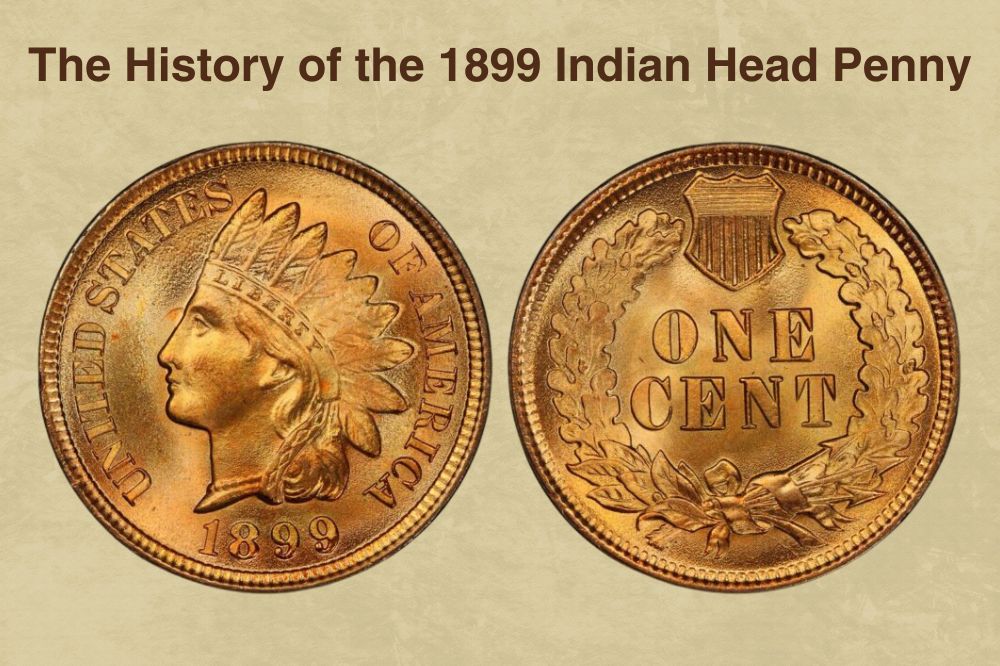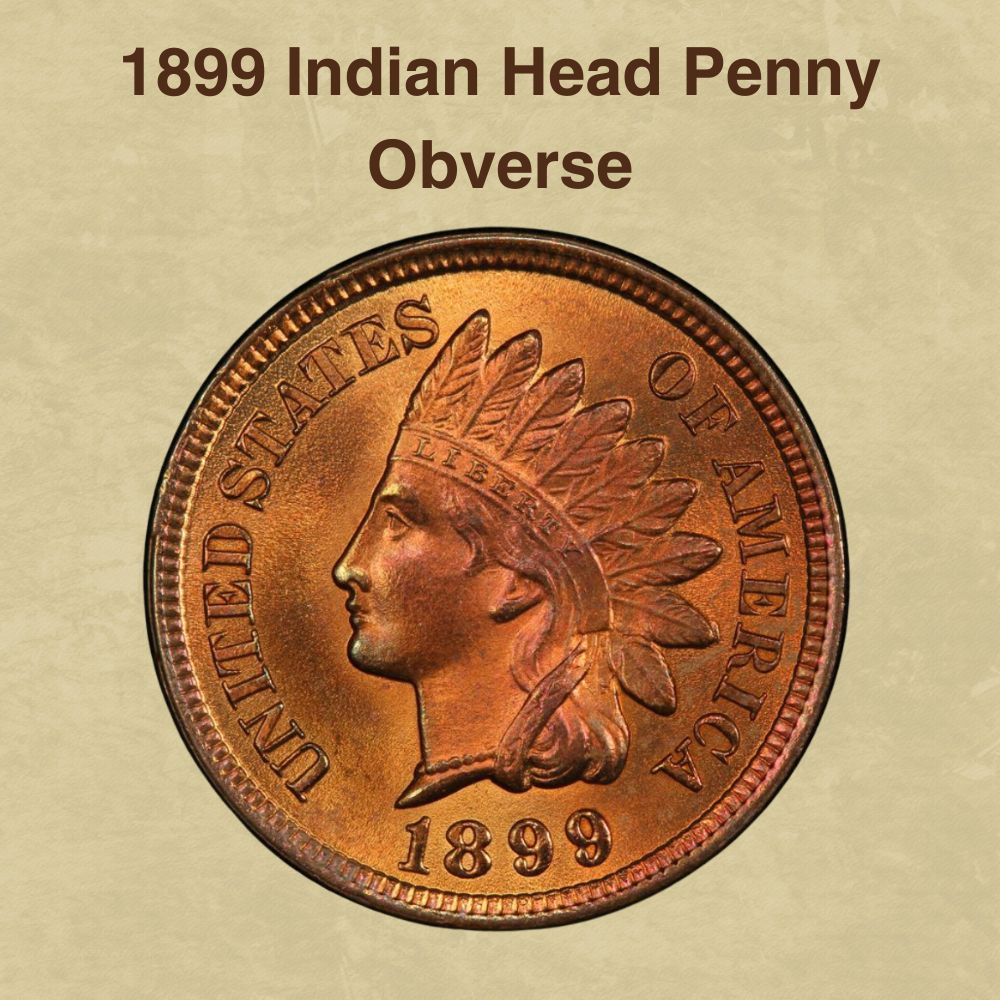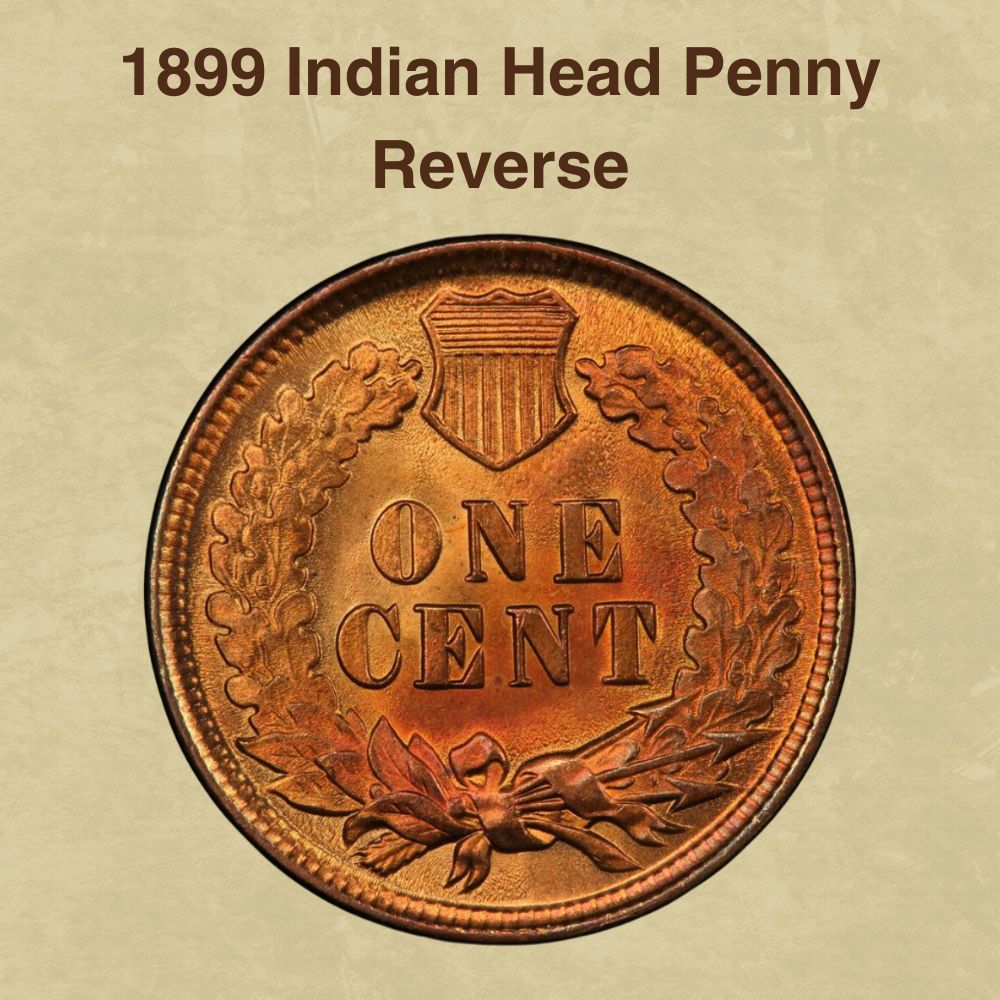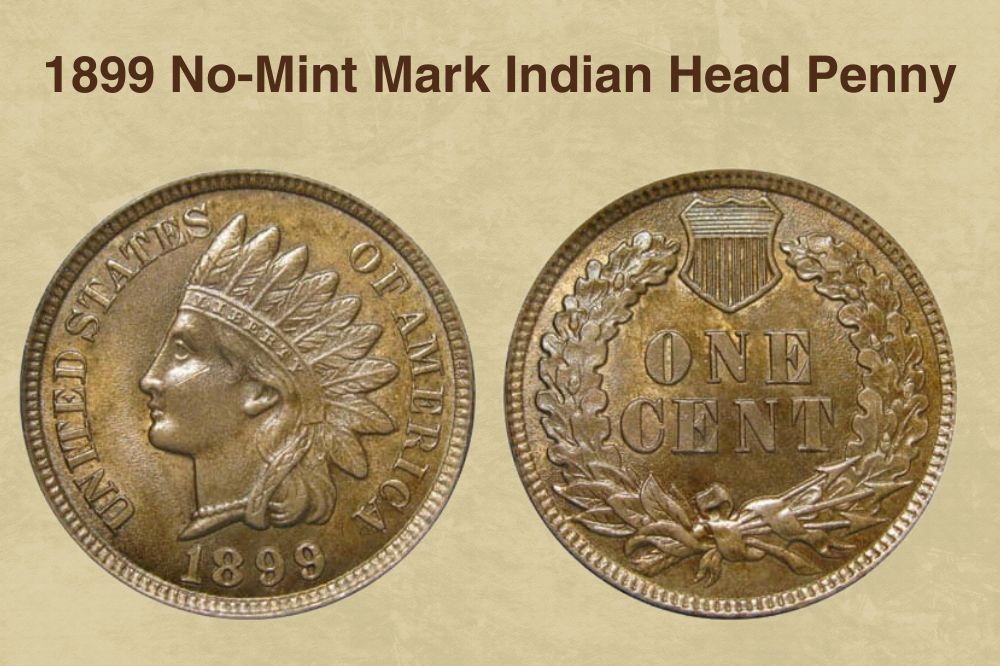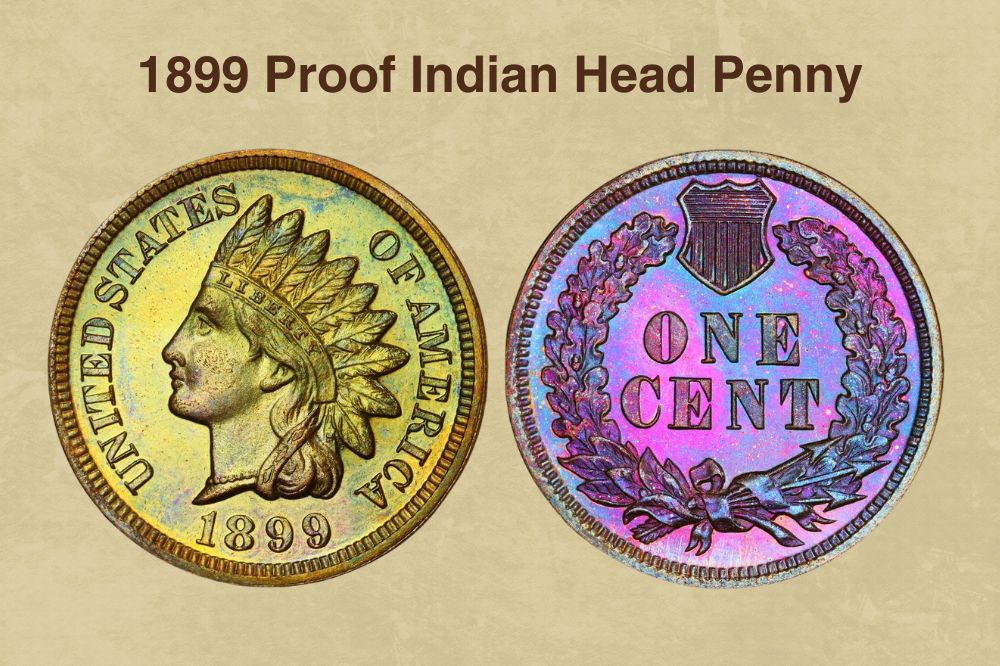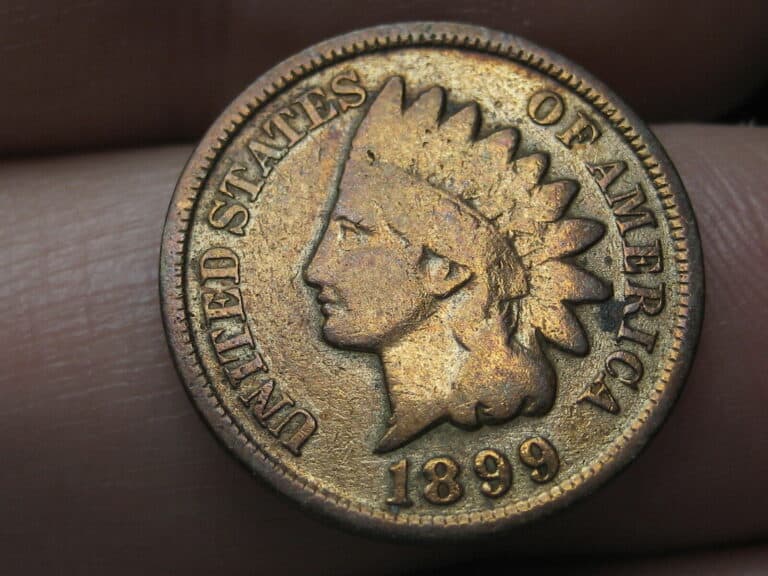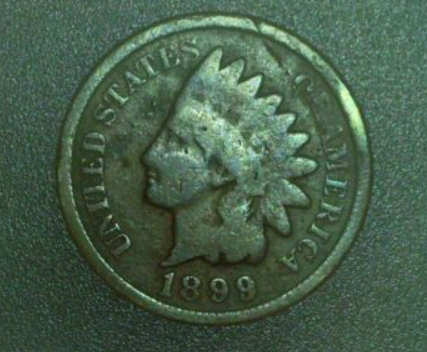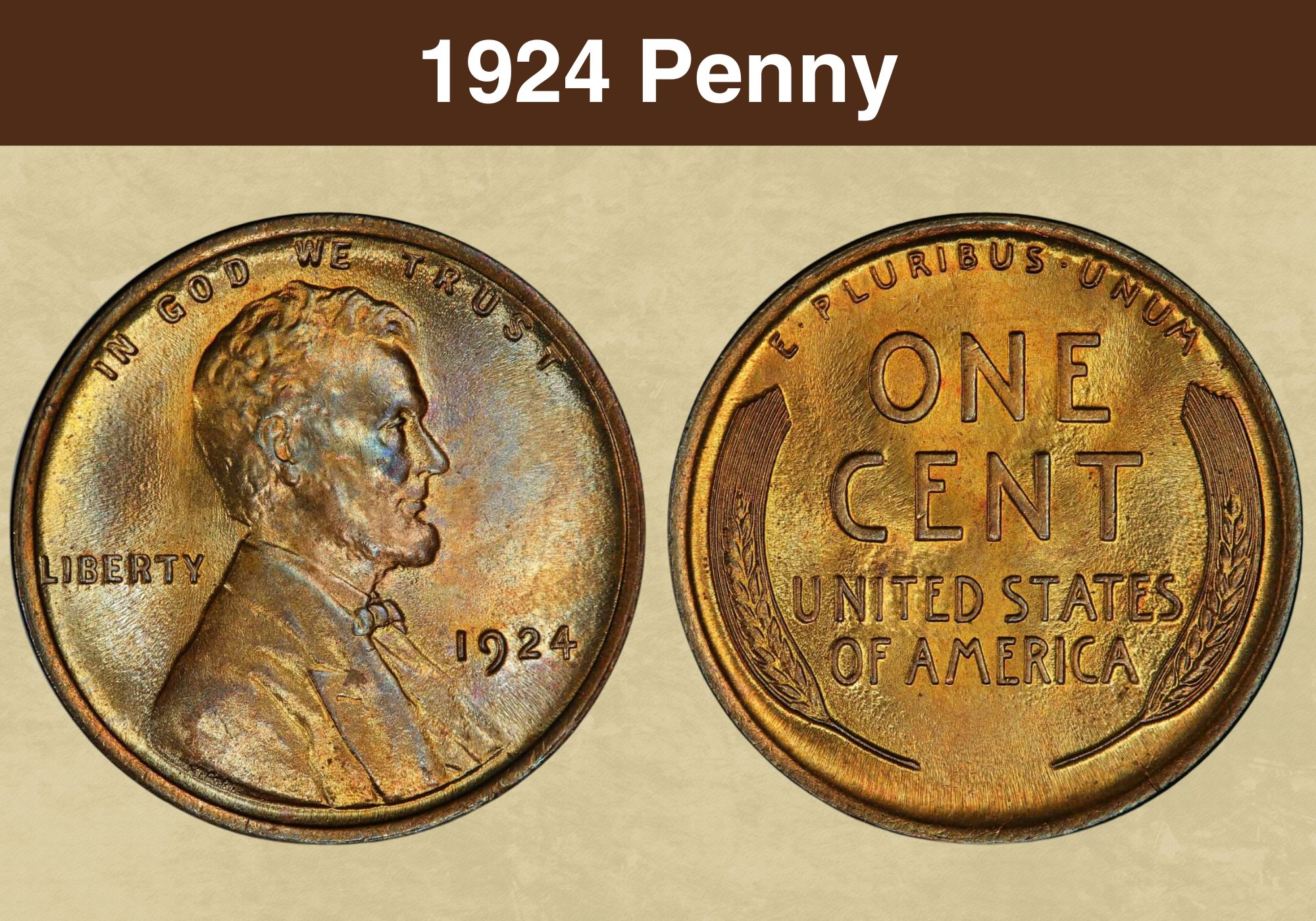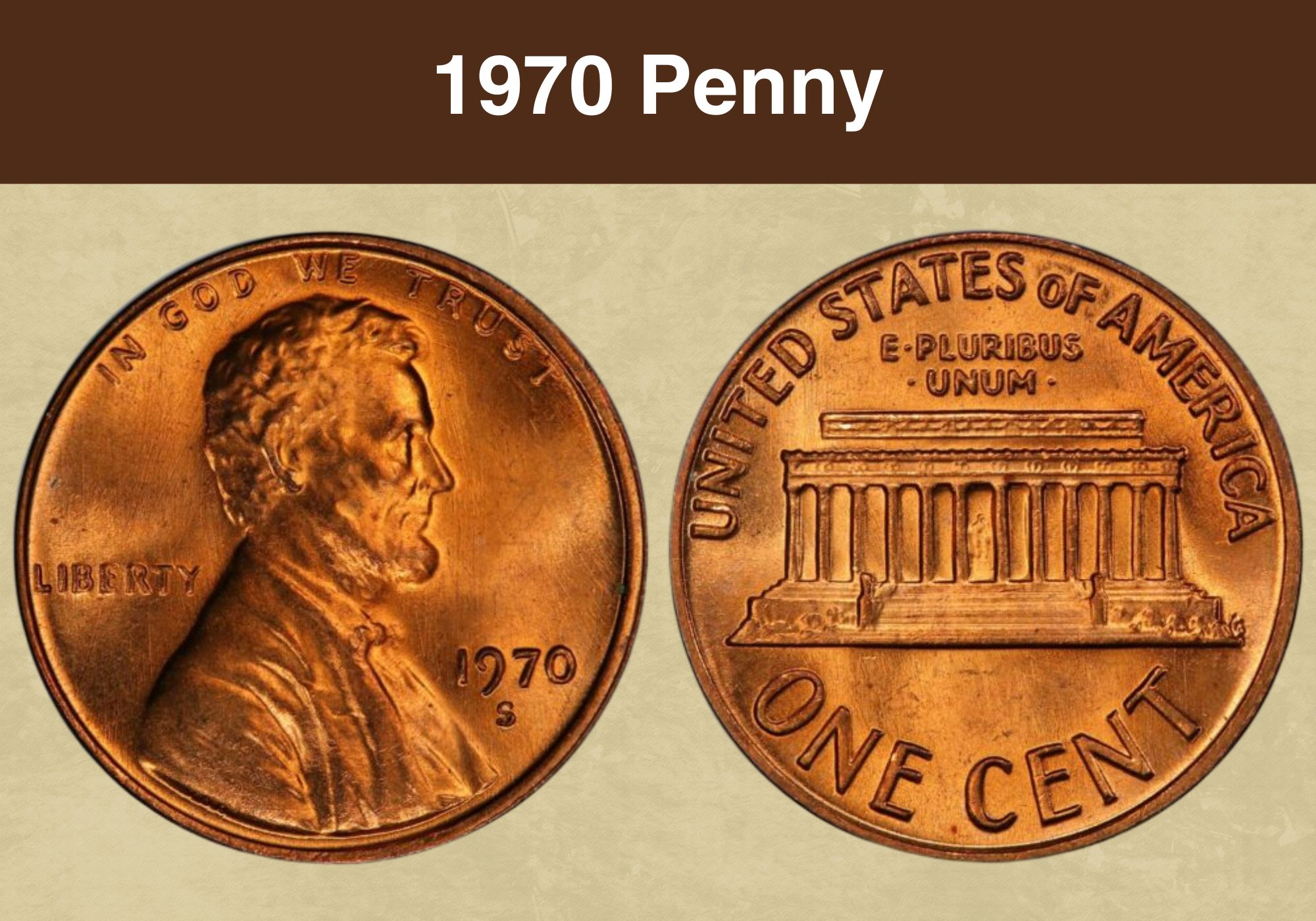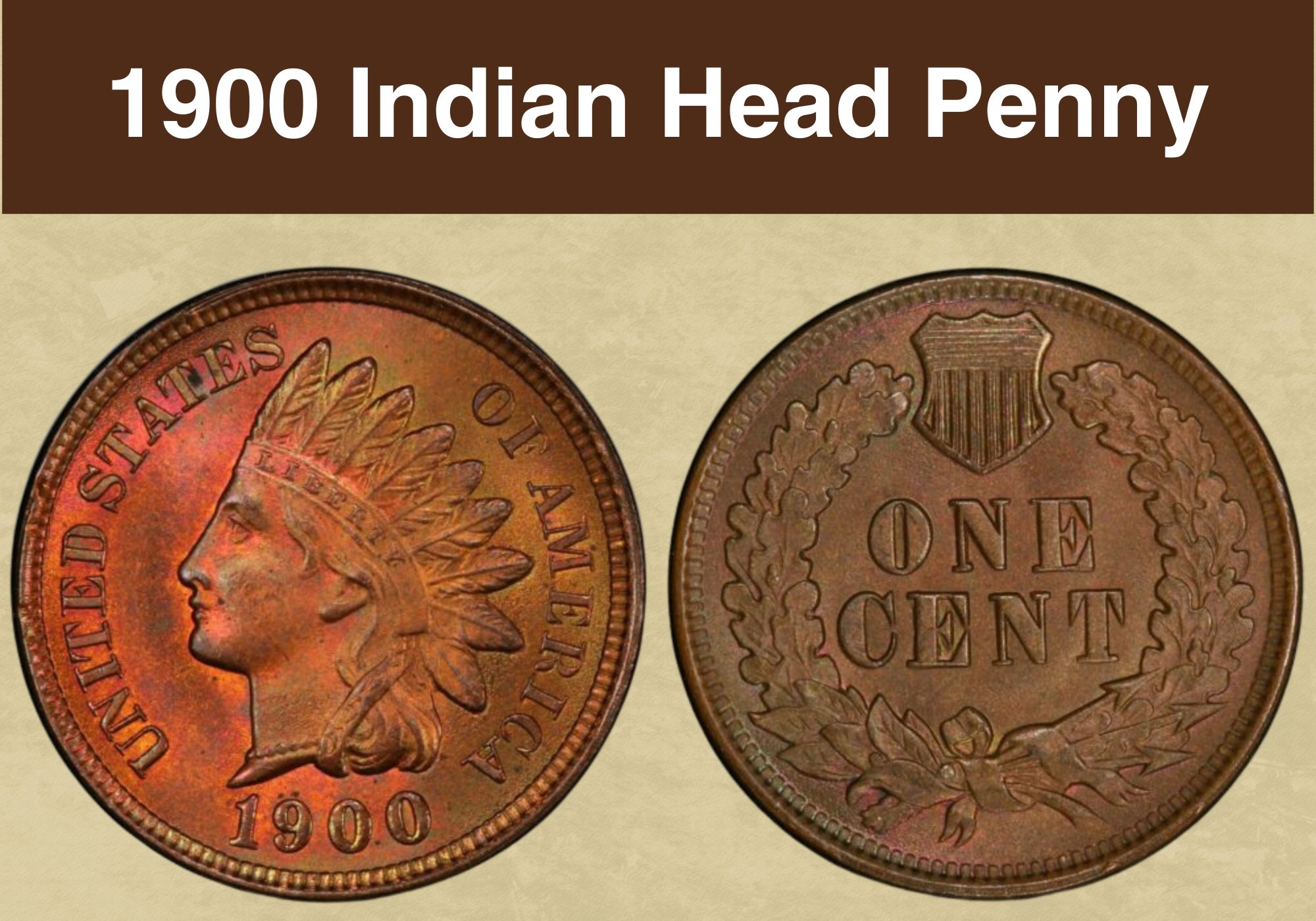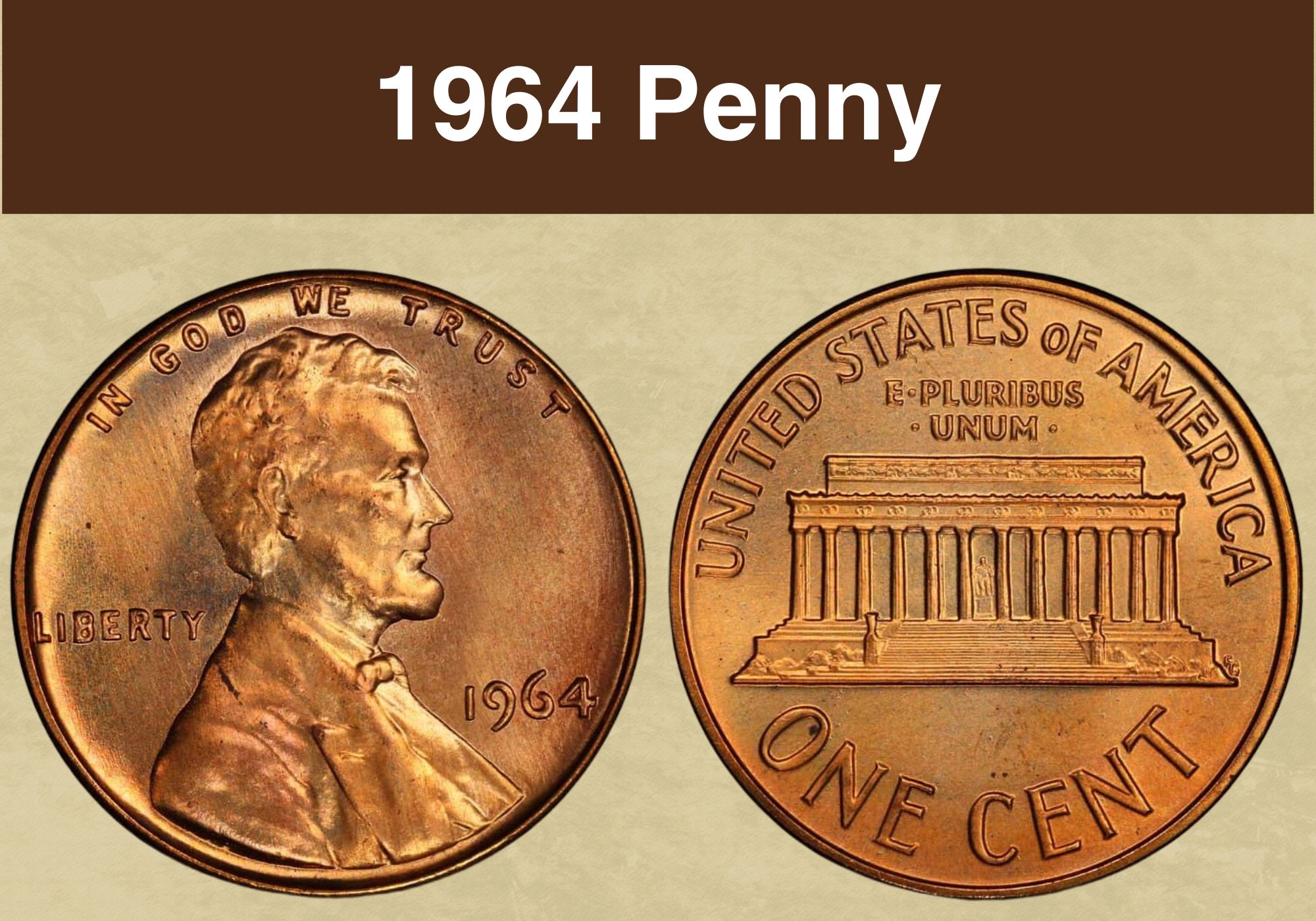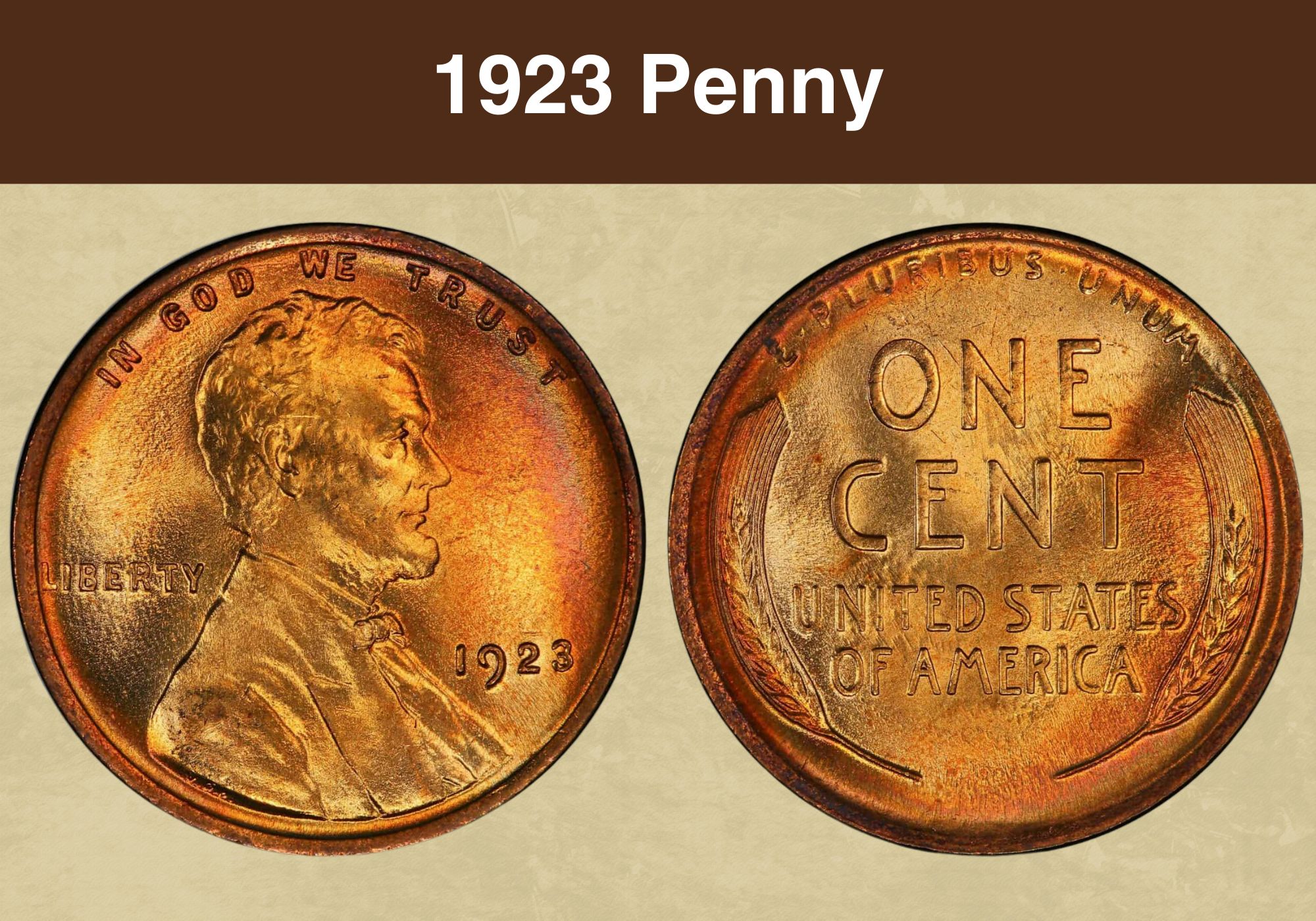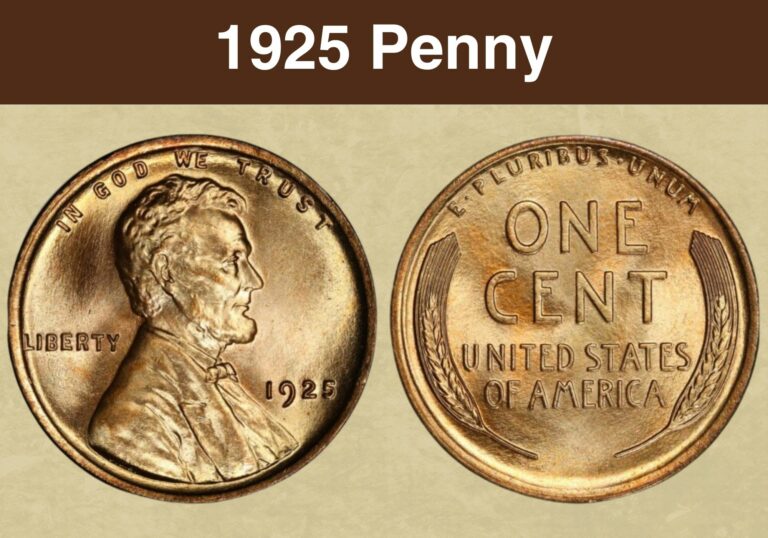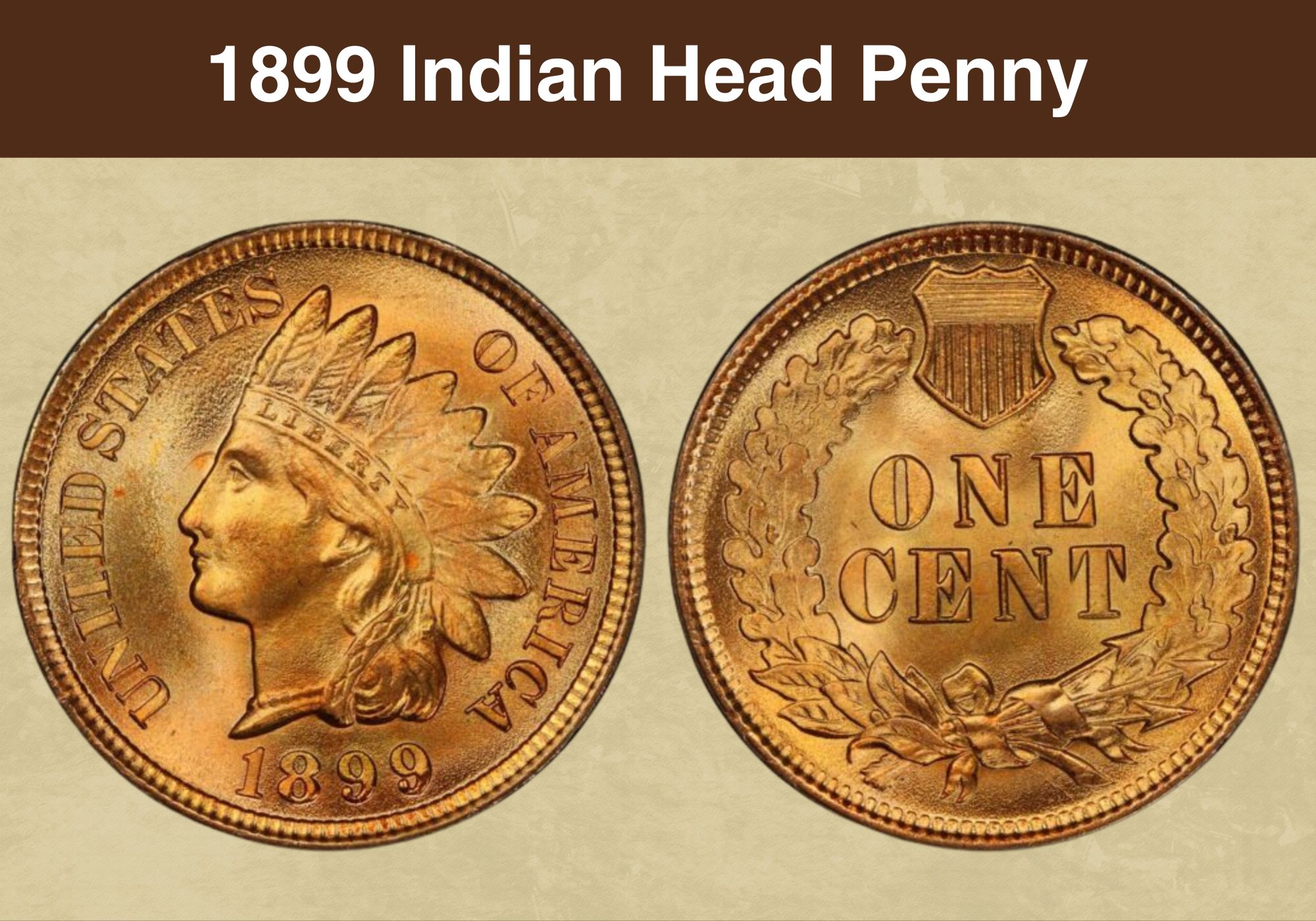
Coin Value Contents Table
- 1899 Indian Head Penny Value Chart
- The History of the 1899 Indian Head Penny
- The Features of the 1899 Indian Head Penny
- 1899 Indian Head Penny Grading Guides
- 1899 Indian Head Penny Value Guides
- 1899 No-Mint Mark Indian Head Penny Value
- 1899 Proof Indian Head Penny Value
- Rare 1899 Indian Head Penny Errors List
- Where to Sell Your 1899 Indian head penny ?
- FAQ
Have you come across an 1899 Indian head penny and want to know whether it is worth a fortune?
You are not alone!
Many collectors love old coins because they can be worth much money. The 1899 Indian head penny is no exception and is greatly sought after in numismatic circles.
This coin is over 100 years old; most examples are circulated or tarnished. Consider yourself very lucky if you own or discover a full red 1899 Indian head penny, as such an uncirculated coin is rare and can be worth hundreds or thousands of dollars!
In this guide, we explain everything you need to know about the 1899 Indian head penny value. We’ll explore the coin’s interesting history, features, varieties, and grading tips.
You will also discover errors that can significantly increase the value of your 1899 Indian head penny.
So, without further ado, let’s jump in and find out: Is an 1899 Indian head penny worth any money?
1899 Indian Head Penny Value Chart |
||||
| Mint Mark | Good | Fine | Extremely Fine | Uncirculated |
| 1899 No-Mint Mark Indian Head Penny Value | $5 | $10 | $25 | $55 |
| 1899 Proof Indian Head Penny Value | – | – | – | $100 |
The History of the 1899 Indian Head Penny
The 1899 Indian head penny belongs to the Indian head cent series struck from 1859 to 1909 by the United States Mint. James Longacre, the Philadelphia Mint Chief Engraver, designed the Indian head cent’s obverse and reverse design.
Early U.S. coin minting can be traced back to 1793. Then, the Mint struck the cent in copper for the longest time until the 1850s, when copper prices skyrocketed, forcing the Mint to consider alternatives.
Starting in 1857, the Mint changed the cent’s composition from 100% copper to a mix of 88% copper and 12% nickel. It also reduced the coin’s size and introduced a new coin, the Flying Eagle cent. From 1864 onward, the composition changed once again from 95% copper and 5% tin and zinc.
The Flying Eagle cent was the first time the Mint used copper-nickel for coin production. Despite its eye appeal, the Flying Eagle was difficult to produce mostly due to the design’s high relief.
Production difficulties prompted the Mint to look for alternative ones again and instructed Longacre to develop other designs for an alternate coin that would replace the Flying Eagle cent. After several reiterations and negotiations, James Snowden, the Mint Director, chose one of Longacre’s designs, the Indian Head.
Ever since the Mint struck the Indian Head cent in 1859, the coin was extremely popular and was hoarded extensively. In response to the demand, the Mint struck this coin in large numbers yearly, except for 1877, when low demand for cents resulted in the lowest mintage in the Indian Head penny series.
The 1899 Indian Head penny was among the final coins in the series before the Lincoln cent replaced the Indian Head cent in 1909.
Also read: 12 Most Valuable Lincoln Penny Worth Money
The Features of the 1899 Indian Head Penny
Let’s now look at the features of the 1899 Indian head penny. You might wonder why reviewing the coin’s features is necessary.
In numismatic circles, a coin’s features are everything. It is how the coin is graded and its value determined; it is how you identify unique varieties that might be worth so much more than a coin’s face value.
Ultimately, intimately understanding your coin’s features will help you identify 1899 Indian head pennies worth money.
The Obverse of the 1899 Indian Head Penny
The Indian head penny gets its name from the obverse design, which features the left-facing portrait of Lady Liberty clad in a Native Indian headdress.
The headdress accentuates Liberty’s flowing hair and is fastened by a band spotting the inscription, LIBERTY.
The words UNITED STATES appear along the inner rim on the left while the remaining part, OF AMERICA, is seen on the right side.
The year date, 1899 is shown at the bottom.
The Reverse of the 1899 Indian Head Penny
The reverse of the 1899 Indian head penny is equally simplistic, but the imagery conveys a powerful message.
An oak wreath occupies most of the coin’s reverse surface. You will notice three arrows tied into the wreath by a flowing, dainty ribbon. The oak wreath represents strength, while the arrows symbolize our country’s sovereignty.
At the top, you will notice a small shield, which symbolizes our readiness to protect our country’s hard-earned liberty, freedom and democracy.
The coin’s denomination, ONE CENT, appears prominently at the center.
Other Features of the 1899 Indian Head Penny
The 1899 Indian head penny comprises 95% copper, 5% tin and zinc.
This plain-edged coin measures 19.00 millimetres in diameter and weighs 3.11 grams.
You will not notice any mint mark on the obverse or reverse, given that the 1899 Indian head pennies were only struck at the Philadelphia Mint.
Also read: 13 Most Valuable Wheat Penny Worth Money
1899 Indian Head Penny Grading Guides
While it’s best to get a professional service to grade your coin, you can get a rough estimate of your coin’s grade by assessing it yourself.
Start by examining the coin under a single light source. If the coin is uncirculated, you will notice complete luster from one point of the coin to the other.
Under the light, the luster will give off bands of light, especially on high points such as Liberty’s cheek, hair curls, jaw, and chin. These high points on the obverse should show no dullness or smoothness.
On the reverse, check for complete luster on high points such as the leaves’ edges, the denomination inscription, and the knot in the ribbon.
| # | Grade |
|---|---|
| 1 | Basal State-1 |
| 2 | Fair |
| 3 | Very Fair |
| 4, 5, 6 | Good |
| 7, 8, 10 | Very Good |
| 12, 15 | Fine |
| 20, 30 | Very Fine |
| 40 | Extremely Fine |
| 50 | About Uncirculated |
| 60 | Mint State |
| 65 | Mint State |
| 70 | Mint State |
Please check our grading guides to know your coin scale, It’s the necessary step to know the exact value of your coin.
Check out now: How to Grade Indian Head Penny?
1899 Indian Head Penny Value Guides
In this section, we’ll answer the question: How much is an 1899 Indian head penny worth?
Factors such as the condition, color and mintage will greatly affect the value of your coin.
There are two varieties of 1899 Indian head pennies whose values we will review below. These include:
- 1899 No-Mint Mark Indian Head Penny
- 1899 Proof Indian Head Penny
1899 No-Mint Mark Indian Head Penny Value
The Philadelphia Mint struck an estimated 53,598,000 Indian head pennies in 1899, one of the highest mintage in the Indian head cent series.
The 1899 no-mint mark Indian head pennies are plentiful across all grades, including full red gems from broken rolls.
What makes these coins collectible is the fact that they are worth more than their face value. In circulated condition, a brown 1899 Indian head cent will fetch between $4 and $32, depending on the condition.
Full red specimens are worth even more, with one graded MS62 valued at $115, which increases significantly with every grade rise.
An Indian head penny from 1899 graded MS68 can fetch as much as $125,000 because such a coin is extremely rare.
According to the Professional Coin Grading Service (PCGS), a collector paid an eye-watering $108,000 at a 2019 Heritage Auctions sale for a full red MS68 1899 Indian head penny, making this the most valuable Indian head penny to date.
1899 Proof Indian Head Penny Value
In addition to the regular strike coins, the Philadelphia Mint also produced proof coins in 1899. An estimated 2,031 proof Indian head pennies were struck that year at the facility.
Previously, proof coins were used as pilots or testing grounds to ensure the dies worked properly before striking numerous coins.
Over the years, the Mint began producing proof coins for sale to collectors interested in preserving them for their numismatic value.
Compared to the years that followed, 1899 was a low-mintage year for proof coins, making these specimens extremely difficult to find but also pleasantly valuable.
It is also worth noting that 1899 is among the few dates in the series with many cameo and deep cameo gems. At the same time, brown and red-brown examples are also readily available.
A brown 1899 proof Indian head penny graded PF62 is worth about $120, while a PF66 will fetch as much as $1,200. The most expensive brown proof Indian head penny from 1899 is graded PF67 and was sold for an impressive $2,875 at a 2010 Bowers and Merena auction.
If you are lucky enough to find a full red 1899 proof Indian head penny, it might fetch you a fortune. At just PF63, this coin is worth up to $350 and as much as $6,000 for a gem specimen graded MS67.
An 1899 Indian head penny with a Cameo (CAM) designation offers the ultimate value. The most expensive example to date is a PF67 sold at a 2004 Bowers & Merena auction for a whopping $13,800.
Also read: 17 Most Valuable Indian Head Penny Worth Money
Rare 1899 Indian Head Penny Errors List
Minting errors are inevitable, especially in high mintage years such as 1899.
If you come across an odd-looking Indian head penny from 1899, consider whether it is an error worth money.
Here are some errors worth looking out for if you want to collect 1899 Indian head pennies.
1899 Re-punched Date Indian Head Penny Error
A re-punched date error occurs when a number in the date year is punched more than once into the working die, causing overlapping of the number when the die moves between punches.
In some 1899 Indian head pennies, you may notice a visible doubling of the number 8 due to a punching error.
A penny with such an error is worth about $25 to $30, which isn’t too bad considering the coin’s face and intrinsic value.
1899 Broadstrike Indian Head Penny Error
A broadstrike error occurs when the striking die punches the planchet outside the holding collar.
The holding collar helps retain the coin’s shape, but the coin may lose its circular shape if struck outside the collar, which is the case with a broadstrike error.
If you find an 1899 Indian head penny with a broadstrike error, it might be worth anywhere between $35 and $40, depending on the extent of the error. As long as the date is visible, the more extensive the broadstrike error, the more valuable the coin.
1899 Die Break Indian Head Penny Error
As the name suggests, a die break is a type of minting error in which a portion of the working die breaks.
Due to the breakage, the die fails to transfer part of the design onto the coin, instead resulting in a blank and depressed portion of the coin.
Depending on the extent of the die break, an 1899 Indian head penny with a die break error is worth approximately $20 and $20, although some collectors have in the past paid as much as $75 for a die break Indian head penny.
1899 Reverse Cud Indian Head Penny Error
Cud errors are similar to die break errors but are more severe and may fetch a bit more.
On a coin, a cud appears like a blob that destroys the inscriptions, surfaces or devices as it rises from the coin’s field.
Cuds are visible errors, and the more pronounced, the more valuable the coin becomes. While die breaks may fetch up to $75, it is not uncommon for cud errors to be valued at $150.
Also read: 11 Most Valuable Wheat Penny Errors
Where to Sell Your 1899 Indian head penny ?
Now that you know the value of your coins, do you know where to sell those coins online easily? Don’t worry, I’ve compiled a list of these sites, including their introduction, pros, and cons.
Check out now: Best Places To Sell Coins Online (Pros & Cons)
FAQ
What is an 1899 Indian head penny made out of?
From 1864 to 1909, all Indian head pennies, including the ones produced in 1899, were struck from 95% copper and 5% zinc and tin alloy. Checking that your Indian head penny is mostly made from copper is one way to ensure your coin is authentic.
Are 1899 Indian head pennies valuable?
The 1899 Indian head penny is worth more than its face value today. These coins can be very lucrative in their uncirculated state but hard to find due to their age. All in all, this year is definitely a worthwhile investment whether you want to add Indian head pennies to your collection or are looking to sell yours.
How rare is an 1889 Indian head penny?
The 1988 penny is not necessarily rare; the Mint struck over 50 million of these coins, making them readily available. Many of the 1899 coins will be very worn because this is an old coin, after all.

